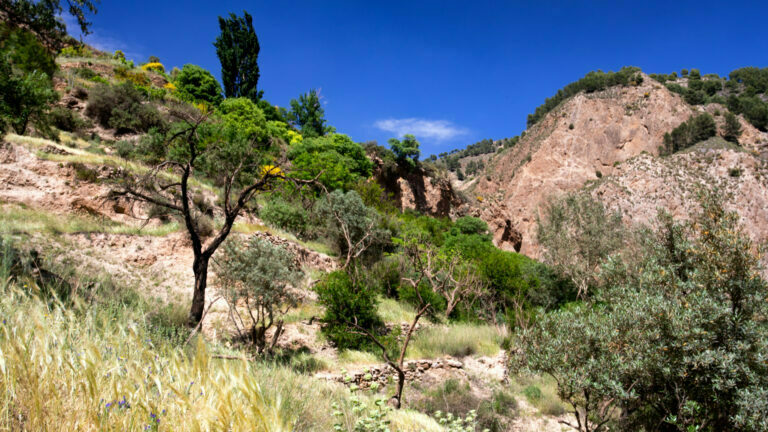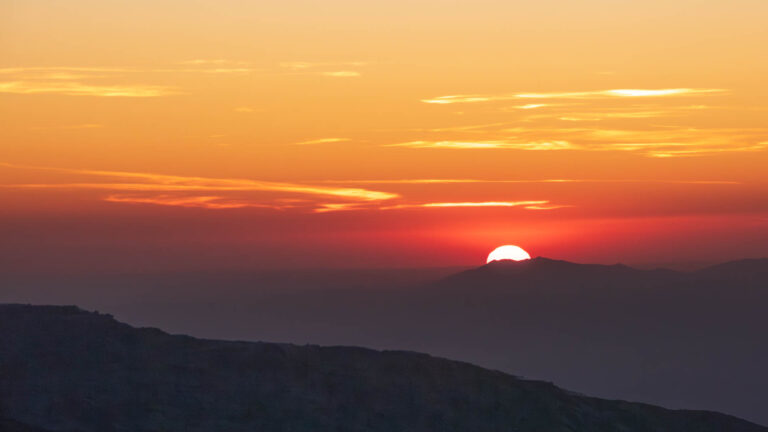The Magic of Mountain Landscapes!
Photographing mountain landscapes requires a lot more than a camera, a couple of lenses and a modicum of fitness, this expedition involved a 21km hike into the mountains of the Sierra Guejar, to say I’m exhausted is understating it, this was a seriously challenging trip with a cumulative climb (and descent) of 1000m – in other words, 15km out, all uphill. This is the level of effort needed to justify the title – unleash the magic of mountain landscapes!
Mountain Landscapes Video
Table of Contents
Firstly kit. I’ve written about this before, check out my post Packing for Overnight Photography Trips or more specifically, my review of the F-Stop Tilopa 50L Hybrid Camera/Camping System
The trick is to pack as little weight as possible, it sounds obvious but in practice, it’s hard. Things that we take for granted in everyday photography have to be jettisoned. For example, instead of three lenses I took two and a lens extender. On this occasion I also jettisoned the tripod figuring that image stabilisation and a steady hand would compensate enough.
Sadly though, in the confusion of moving my kit from my car to Richard Hartley’s car, my walking poles got left behind, adding an extra 10% (my guess) onto the effort expended.

What I Packed
- Three Litres of Water
- One freeze dried meal – Thai Chicken from Adventure Nutrition, very tasty!
- 1 Sandwich and 2 Chocolate Bars
- Extra Jacket for the early morning start from Rab
- Gloves from Vallaret
- Sleeping Bag from Therm-a-rest
- Inflatable Mattress from Thermarest
- Tent from MSR
- MSR Camping Stove
Camera Gear
- Canon 5Ds
- Canon EF 16-35mm
- Canon EF 70-200mm
- Canon EF 2x Extender
- Cleaning Accessories
The Hike
We set off at a fairly brisk pace from the last place we could get the cars to, the path was clear and slightly uphill, All 17 km of it. Our vertical climb was 1000 metres. Fortunately the valley is extremely picturesque at this time of year, very green because of all the rain we’ve had in Spain and with the imposing peaks at the head of the valley we could have been in Switzerland!

Half of the group had planned to do half of the walk and turned back before we reached the head of the valley. When the rest of us arrived there we found a small bridge across the river and a daunting climb out of the valley. We were already pretty exhausted but maths said the refuge where we planned to spend the night was only 4km away and that would leave a mere 7km to walk downhill the next morning. We were almost exactly half way!
We reached the refuge at about 4pm, having started at 10:30am – nearly six hours hiking with heavy bags! Once we got there, we realised that the spring indicated on the map was non-existent so two volunteers hiked back with bottles to the spring we had already crossed! Sometimes, nature doesn’t cooperate!
The Photography
In addition to the daytime shorts, I took a number of photographs of the sun setting over the distant hills and some very atmospheric shots of the clouds enveloping the peaks. In the morning, some shots in the dark of the moon rising over the mountains as well as the sun, once it decided to come up, lighting the mountain pass.
In terms of the actual photography, there were some interesting challenges balancing the exposure. For example the shots of the moon rise were done before the sun came up, in the dark so needed high ISO but not so much that the sky bleached out. The moon itself was yellow to the naked eye and retaining enough of the dynamic range to show that while still having detail in the foreground was challenging to be honest. Some of these images required extremely high ISO and treatment with DxO PureRAW 5 to remove the consequent noise. They were processed in Adobe Lightroom.
The opposite problem affects sunsets – the challenge there is to prevent the sun itself from blowing out the highlights while still retaining detail in the rest of the picture. Again, these pictures needed careful handling and I exposed most of them three stops below what the exposure meter suggested. I rarely use exposure compensation to be honest as I prefer to set each setting independently in order to maximise the richness of the tones n the picture.
I used the 2x extender on the 70-200mm lens handheld – well almost, I sat on a very solid stone wall and rated my elbows against my knees to keep the camera as still as possible- imagine a laser fixed to the lens and pinpointing the centre of your shot – the slightest tremor at that kind of distance will move the centre spot several dozen feet. Out of about twenty frames I got a reasonable amount of usable images.
I look forward to the Canon R5 I have on order. In body stabilisation will make a huge difference and though I’ve always been a firm advocate of tripods, I expect this camera to make a difference.
The challenge in mountain photography is to capture the atmosphere, the grandeur and the danger of the mountains. What I feel when I’m there is a sense of wonder that the view is essentially unchanged in several millennia, probably longer. I feel unimportant in the scheme of things, a speck in the universe. These views were seen by neanderthal humans, exactly the same.

Conclusion
There is always a compromise required when hiking long distances to get photographs. In this case I think I made the right decisions regarding what I left behind, I am happy with the photographs I’ve processed. There was a price to pay – a much lower “keeper” rate, physical tiredness lasting several days, but on balance I’m very happy with the way this trip went.
Subscribe…
I’ll keep you in the loop with regular monthly updates on Workshops, Courses, Guides & Reviews.
Sign up here and get special prices on all courses and photowalks in 2026







